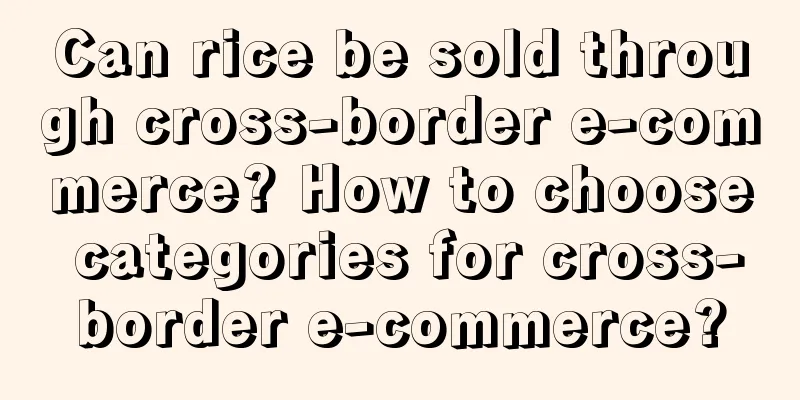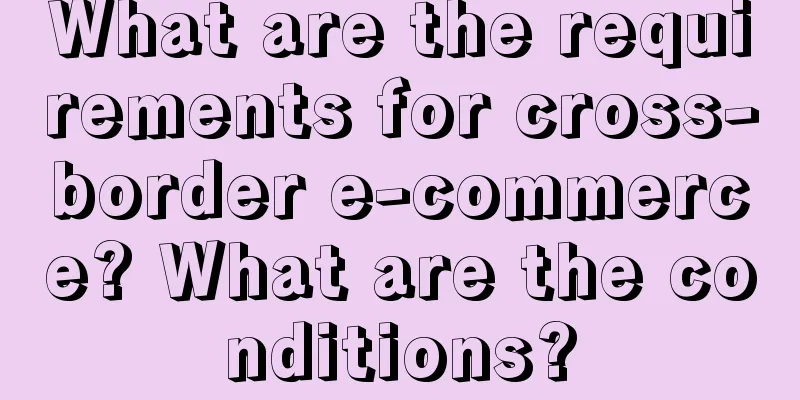Can rice be sold through cross-border e-commerce? How to choose categories for cross-border e-commerce?

|
With the development of globalization and people's pursuit of healthy life, rice, as a major food product, has gradually become a popular category in cross-border e-commerce. In this fast-paced and diversified era, rice cross-border e-commerce not only meets consumers' demand for high-quality rice, but also provides more choices and convenience. So, can rice be used in cross-border e-commerce? Let's explore it. 1. Can rice be sold in cross-border e-commerce? First of all, rice has a wide market demand. As one of the most important grains in the world, rice is a basic component of people's daily diet in many countries. Therefore, there is a demand for rice in both developed and developing countries. This provides a broad market space for cross-border sales of rice. Secondly, rice has a long shelf life and stable transportation properties. Compared with other agricultural products, rice has a relatively long shelf life and can maintain its quality for a long time under proper storage conditions. At the same time, rice packaging is relatively simple and easy to transport. This makes it easier to transport rice across borders without causing quality loss or damage. In addition, rice has different characteristics of different varieties and origins. Rice produced in different countries and regions has its own unique characteristics, such as fragrant rice and glutinous rice. This allows consumers to choose the rice variety that suits them according to their taste preferences. Cross-border e-commerce can meet consumers' pursuit of diversity and personalization by providing rice from different regions and varieties. 2. How to choose categories for cross-border e-commerce? When choosing a cross-border e-commerce category, you need to consider multiple factors. First, you need to choose products that meet market demand. Through market research and analysis, you can understand the consumption habits and preferences of various countries and regions and choose products that meet market demand. When choosing rice as a cross-border e-commerce category, you need to consider the target market's demand for rice and whether there is potential purchasing power and consumer groups. Secondly, we need to choose products with competitive advantages. In the global market, there are many rice suppliers and brands. In order to stand out in the fierce competition, we need to choose products with competitive advantages. This includes high-quality rice, unique varieties or origins, and good brand image and reputation. In addition, the operability and marketability of the product should be considered. When choosing a cross-border e-commerce category, it is necessary to consider whether the product is easy to distribute, whether it has a high profit margin, and whether it complies with the regulations and policies of the cross-border e-commerce platform. Finally, you should make your choice based on your own resources and capabilities. Different categories require different expertise and experience. When choosing a cross-border e-commerce category, you need to consider whether you have the expertise and resources in the relevant field in order to better carry out operations. As a widely-demanded food product, rice has the potential for cross-border sales. By understanding market demand, selecting products with competitive advantages, considering operability and marketability, and making choices based on one's own resources and capabilities, rice can become a potential category for cross-border e-commerce. Recommended reading: Which platform should I choose for my personal cross-border e-commerce business? What are the requirements for entry? How much does it cost for personal cross-border e-commerce? Do I need a deposit? Can cross-border e-commerce personal trademarks be registered? What are the regulations? |
<<: How to operate cross-border e-commerce? What are the operating models?
>>: How does Shopee charge cross-border e-commerce shipping fees? What are the logistics models?
Recommend
Zhong Xuegao sold ice cream for 3.5 yuan, and netizens quarreled!
Last year, Zhong Xue Gao, which was known to many ...
Poor-quality children's books, high-priced paper books, boycotting e-commerce, why do booksellers only "hate" JD.com?
The conflict between booksellers and JD.com intens...
How to do cross-border e-commerce without English? Cross-border e-commerce operation skills
Cross-border e-commerce mainly serves foreign cust...
Which joint-stock bank’s credit cards are planning to use Xiaohongshu?
For financial products, such as credit cards, Xiao...
From Lei Jun’s latest speech, I summarized 3 inspirations for doing “private domain”
This article deeply analyzes the inspiration given...
Where is the eBay Seller Center? What functions does it have?
The current development of the eBay platform is qu...
Does Lazada require a credit card? Are there risks in paying with a credit card?
In the digital age, the rise of e-commerce platfor...
Case analysis: Coca-Cola’s brand naming, slogan, and brand story
Coca-Cola is currently a popular brand and beverag...
Lack of competitive advantage: JD.com’s dilemma in e-commerce
This article uses the public relations war between...
What is the delivery process of Shopee's local stores? Process Introduction
Merchants who run local stores on Shopee must conf...
Are Lazada's merchants authentic? What is the difference between Lazada's local stores and cross-border stores?
Lazada is one of the largest online shopping platf...
What are Amazon's image size requirements? What is the appropriate image size?
When Amazon merchants upload new products, they mu...
"Outdated" male stars "harvest" aunts on video accounts
Middle-aged male celebrities have found a new stag...
Although metaphysical marketing is good, don’t be greedy
This article explores the rise of metaphysical mar...
A thorough explanation of "new retail"
Many people have discussed the concept of new reta...









